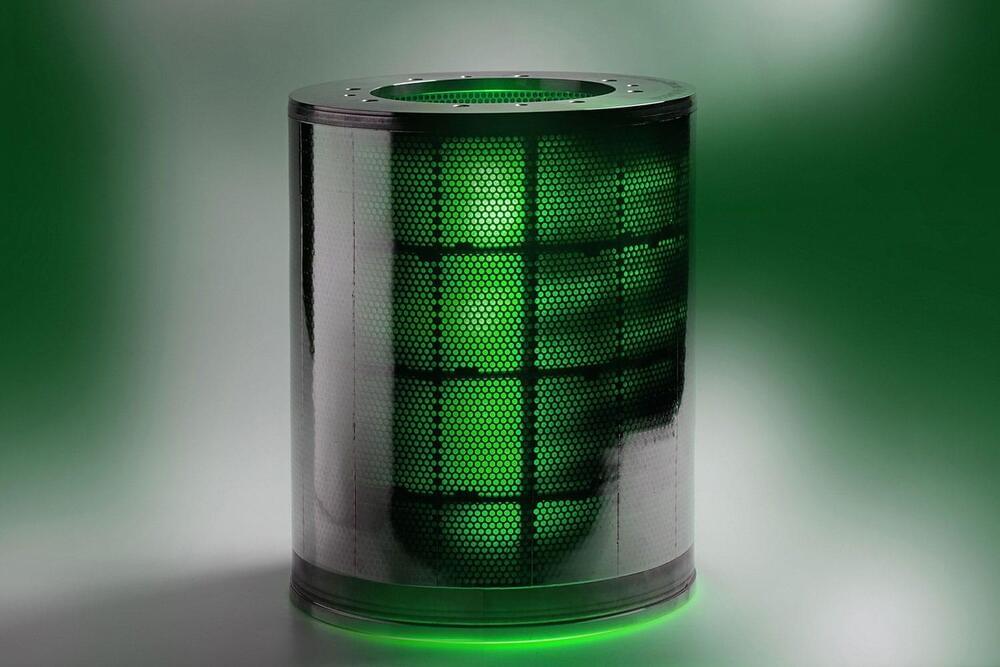The Cybernetic Theory of Mind, or the CTM model, is an integral multidisciplinary ontological model that allows to draw a wide variety of predictions and deductions from the intersections of two or more foundational axioms. The CTM model also allows integration of further epistemic elements under its broad ontological umbrella as they come to be known. The CTM model can be visualized as a 3D pyramid with 4 foundational axioms at the base and the OS axiom, related to the Omega Singularity (as well as “Operating System”), at the apex of the pyramid (See The CTM Pyramid of Foundational Axioms below).
Get the latest international news and world events from around the world.

Scientist Who Genetically Modified Human Babies Released From Prison
Remember He Jiankui, the Chinese scientist who shocked the world when it emerged in late 2018 that he had used CRISPR to tinker with the genetic code of IVF embryos, leading to the birth of twins who are likely the world’s first genetically modified humans?
The news led to a broad outcry among scientists, ethicists and regulators, not the least because experts in the field later found the experiment to be tainted by “egregious scientific and ethical lapses.”
Long story shot, China ended up imprisoning He, who also lost his research position at the Southern University of Science and Technology in China — but now MIT Technology Review, which first broke the news of the experiment back in 2018, reports that he’s out of prison and even answered his cell phone for a brief call.

New laser-drilled filter can remove microplastics from wastewater
Microplastics have been a persistent environmental problem, and it is now known that microplastics have permeated the terrestrial, freshwater, and marine ecosystems. Water treatment plants provide a viable solution for the removal of microplastics from the environment. However, until now, these plants have not been able to sufficiently filter out tiny microplastics in wastewater.
In the SimConDrill project, Fraunhofer ILT has joined forces with industrial partners to build a maintenance-free filter that stops microplastics in wastewater treatment. The challenge was to drill as many holes as possible, as small as possible, in a steel foil in the shortest time possible, says project manager Andrea Lanfermann.
Fraunhofer ILT engineers used the multi-beam process – in which a matrix of identical beams is generated from a laser beam via a special optical system – with an ultrashort-pulse laser (TruMicro 5,280 Femto Edition) to drill holes simultaneously with 144 beams.
In the first test, the fine powder from 3D printers was filtered from contaminated water. The setup is now being tested in a wastewater treatment plant under real conditions.

Crypto 2022: Hackers have nabbed $1.22 billion already
Hackers so far are focusing on decentralized finance (DeFi) projects to steal crypto this year, a new report found, a reversal from 2021 when they used scams and online fraud for most of their exploits.
So far, investors have lost over $1.22 billion to hackers in the first three months of the year, nearly eight times more than the $154 million lost in the first quarter of 2021, according to crypto security firm Immunefi. Ninety-nine percent of those losses were from software exploits, the report found, specifically the hacks against Wormhole and Ronin.
This is not an anomaly, experts warn. It’s likely this kind of nefarious activity will become more common, while scamming of investors could wane.

The Most Distant Exoplanet Ever Found by Kepler Is… Surprisingly Familiar
An exoplanet a whopping 17,000 light-years from Earth has been found hiding in data collected by the now-retired Kepler Space Telescope.
It’s the most distant world ever picked up by the planet-hunting observatory, twice the distance of its previous record. Fascinatingly, the exoplanet is almost an exact twin of Jupiter – of similar mass, and orbiting at almost the same distance as Jupiter’s distance from the Sun.
Named K2-2016-BLG-0005Lb, it represents the first exoplanet confirmed from a 2016 data run that detected 27 possible objects using a technique called gravitational microlensing rather than Kepler’s primary detection method. The discovery has been submitted to the Monthly Notices of the Royal Astronomical Society, and is available on preprint server arXiv.

Neuroscientists Are Confident the Secret to Reversing Brain Damage Is Restoring Brain Plasticity
The Neuro-Network.
𝐍𝐞𝐮𝐫𝐨𝐬𝐜𝐢𝐞𝐧𝐭𝐢𝐬𝐭𝐬 𝐀𝐫𝐞 𝐂𝐨𝐧𝐟𝐢𝐝𝐞𝐧𝐭 𝐭𝐡𝐞 𝐒𝐞𝐜𝐫𝐞𝐭 𝐭𝐨 𝐑𝐞𝐯𝐞𝐫𝐬𝐢𝐧𝐠 𝐁𝐫𝐚𝐢𝐧 𝐃𝐚𝐦𝐚𝐠𝐞 𝐈𝐬 𝐑𝐞𝐬𝐭𝐨𝐫𝐢𝐧𝐠 𝐁𝐫𝐚𝐢𝐧 𝐏𝐥𝐚𝐬𝐭𝐢𝐜𝐢𝐭𝐲
𝙁𝙤𝙧 𝙩𝙝𝙚 𝙬𝙤𝙧𝙡𝙙’𝙨 𝙡𝙚𝙖𝙙𝙞𝙣𝙜 𝙣𝙚𝙪𝙧𝙤𝙨𝙘𝙞𝙚𝙣𝙩𝙞𝙨𝙩𝙨, 𝙩𝙝𝙚 𝙨𝙚𝙘𝙧𝙚𝙩 𝙩𝙤 𝙪𝙣𝙡𝙤𝙘𝙠𝙞𝙣… See more.
Stimulating brain plasticity is the key to treatment for the 1.7 million Americans who suffer a traumatic brain injury each year.


Revolutionary DNA Nanotechnology Speeds Up Development of Vaccines
Revolutionary tool will meet future pandemics with accelerated response.
A new tool speeds up development of vaccines and other pharmaceutical products by more than one million times while minimizing costs.
In search of pharmaceutical agents such as new vaccines, industry will routinely scan thousands of related candidate molecules. A novel technique allows this to take place on the nano scale, minimizing use of materials and energy. The work is published in the prestigious journal Nature Chemistry.


Lockheed Martin releases open-source satellite interface for on-orbit docking
COLORADO SPRINGS – Lockheed Martin on April 4 released the technical specifications of a docking adapter that could be used by manufacturers to make satellites interoperable and easier to update on orbit with new technology.
The technical data for the Mission Augmentation Port (MAP) can be used by designers to develop their own docking adapters, said Lockheed Martin.
The company used the MAP standard to design its own docking device, called Augmentation System Port Interface (ASPIN).